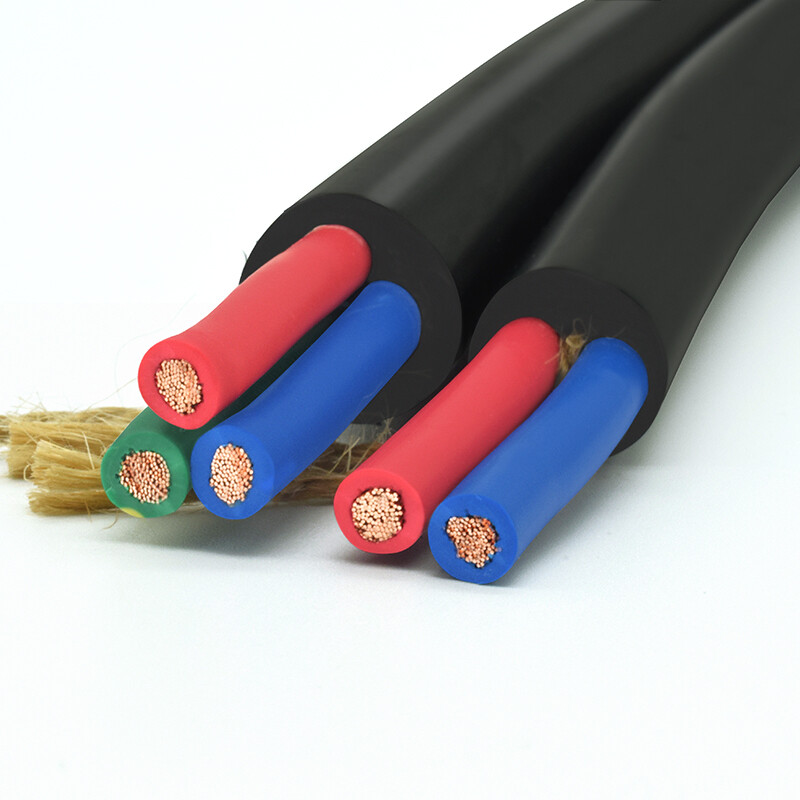What is a flexible cable? What is meant by flexible cable?
This document details the origins of the definition of flexible cable, as well as some of the differences between it and regular cable.
Reading this article can help you recognize what flexible cable is and how to purchase it when you are shopping.
The cable according to the laying method can be divided into fixed laying, and mobile laying two categories.
Fixed laying for the installation, the cable is fixed, such as BV, RVV, YJV, and so on.
Mobile laying for the installation, the cable with the equipment to do reciprocating movement, such as TRVV, TRVVP, and so on.
According to the national standard cable conductor classification, the conductor is divided into four kinds: solid conductor; stranded conductor; soft conductor; and softer than the soft conductor conductor.
Solid and stranded conductors are used in fixed-laying cables.
Soft conductors and softer conductors are used in flexible cables and flexible wires, which can also be used for fixed laying.
So the market says that flexible cables are drag chain cables, but robotic cables are wrong.
This article focuses on mobile laying cables.

About Flexible Conductors
If you think this article is useful to you, you can bookmark it.
We distinguish between the types of conductors, that is, according to the cable’s “maximum diameter of a single wire in the conductor” to classify.
To meet the standards set by the national standard, it can be called several types of conductors. Specific rules of determination, if you need to buy, can consult the ZMS cable team.
Softer Soft Conductor
Through the judgment of the conductor, we need to make one thing clear, that is, “the maximum diameter of a single wire in the conductor” the smaller, the higher the cost.
For example, drag chain cables, robot cables, etc.
Because of their special requirements, Mso the single wire diameter is much smaller than the specified value, to meet other national standards.
So the question is, is not the “maximum single wire diameter in the conductor” the smaller the better? How to purchase when we buy?
Highly Flexible Drag Chain Cable
The maximum diameter of a single wire in the conductor is specified by each cable manufacturer, which is better than the national standard.
The smaller the maximum single wire diameter in the conductor, the better the flexibility of the cable will be.
Also according to the application of the cable purchase, for example, if the requirement of tensile strength, then the single wire diameter will not be very small.
Difference between Normal Cable and Flexible Cable
Since RVV and RVVP both have a certain degree of flexibility, they are often used as drag chain cables.
However, compared to TRVV drag chain cables, they can only be called ordinary cables.
TRVV cable has excellent flexibility, not only good bending and stretch resistance, but also has a shielding function, this aspect is ordinary flexible cable can not be compared.
The structure of the conductor is different, the insulation material is different, and the cable forming method is different, respectively, the extruded tube type and extruded type sheath.
In flexible cables, the cable is frequently bent and moved by force.
In ordinary cables operating in such an environment, due to bending force, the core of the cable is pressurized, and the whole bear tensile force.
Initially, due to the elasticity of the material, the cable can still work normally.
However, after a period of operation, the material will be deformed due to excessive stress.
After this special extrusion process, the core of the cable forms a different pressure and tension area, easy to produce the phenomenon of spinning, the cable at any time may break the core.
Flexible cables are more flexible than ordinary cables.
The conductor diameter of the flexible cable is very small.
However, to protect the conductor, the selection of a certain degree of hardness and flexibility to resist machine fatigue and a certain strength of the insulating material.
Therefore, the flexibility of flexible cable means high flexibility, not high softness. This is not available in ordinary cables.
Highly flexible cables are also known as specialty cables, and “specialty” refers to cables that are used in special environments.
It is so highly flexible cable that will usually have oil resistance, abrasion resistance, torsion resistance, bending resistance, and other characteristics.
This is the ordinary cable can not be compared with it, which is also an important reason why ordinary cables can not replace the highly flexible cable.
The above is about some of the introduction of flexible cable. In fact, in terms of flexible cable, there is a lot of cable knowledge worth sharing, if you are interested in it, collect it!
